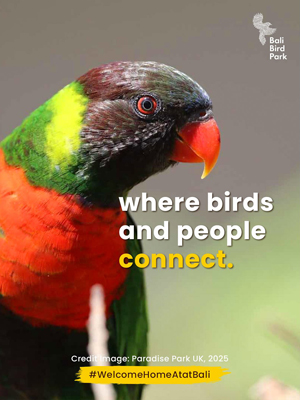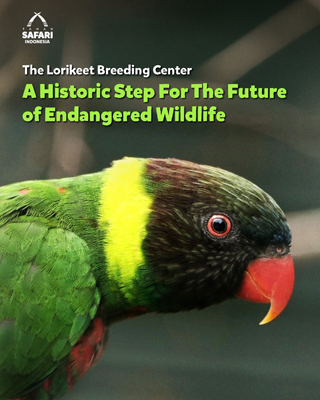Mitchell’s Lorikeets bred in Cornwall are saving the species from extinction in Bali
October 2025
Mitchell’s Lorikeet is highly endangered in its native Bali with just a handful of birds remaining in the wild. Now 40 bred at Paradise Park have formed the core of a project to restore them.
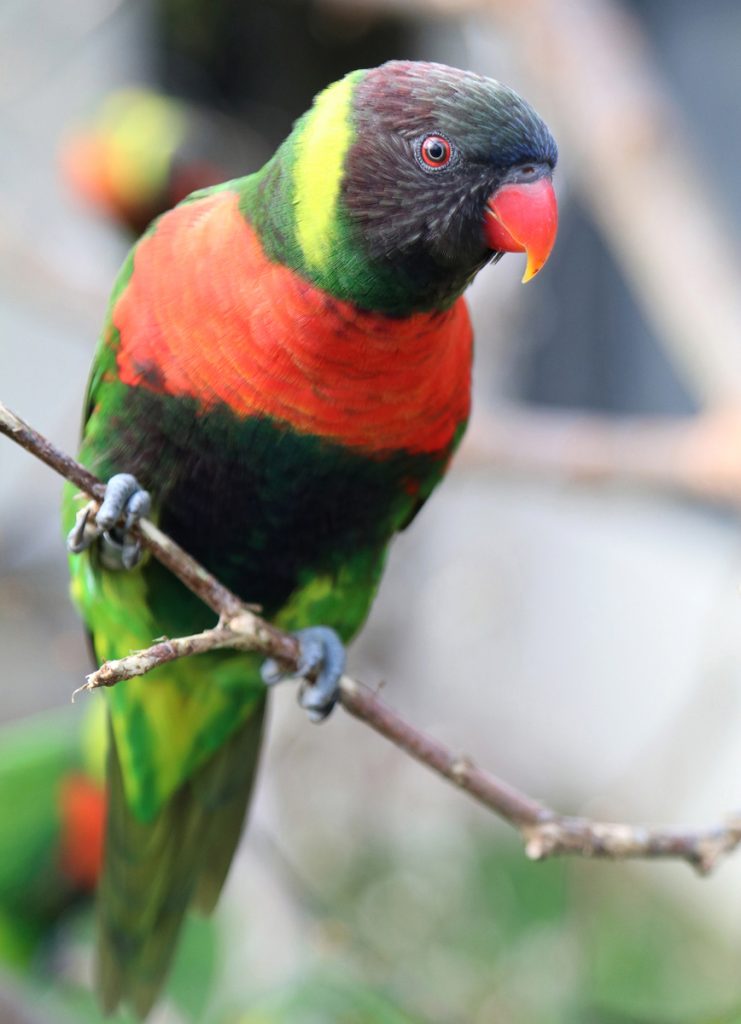
Mitchell’s Lorikeet is a beautiful nectar-loving parrot, a sub-species in the rainbow lorikeet family, and Paradise Park Wildlife Sanctuary in Cornwall, UK, has been working with them since 2011.
It first brought together odd birds kept in European collections with the aim of establishing a captive breeding group. Over time, this strategy led to the Park becoming home to the world’s largest group and a vital resource for the future of this beautiful, nectar-loving parrot.
With over 120 chicks reared, the Park’s close connection with the World Parrot Trust gave the opportunity to work with local partners in Bali – young birds from Cornwall would be at the centre of breeding and release projects in two locations.
At the Park the dedicated staff documented every stage of the breeding process and produced comprehensive husbandry guidelines. Ahead of the transfer Louise Caddy, who heads up the parrot section, travelled to present workshops with the receiving organisations, sharing her years of experience on how to care for the lorikeets and maximise their breeding potential.
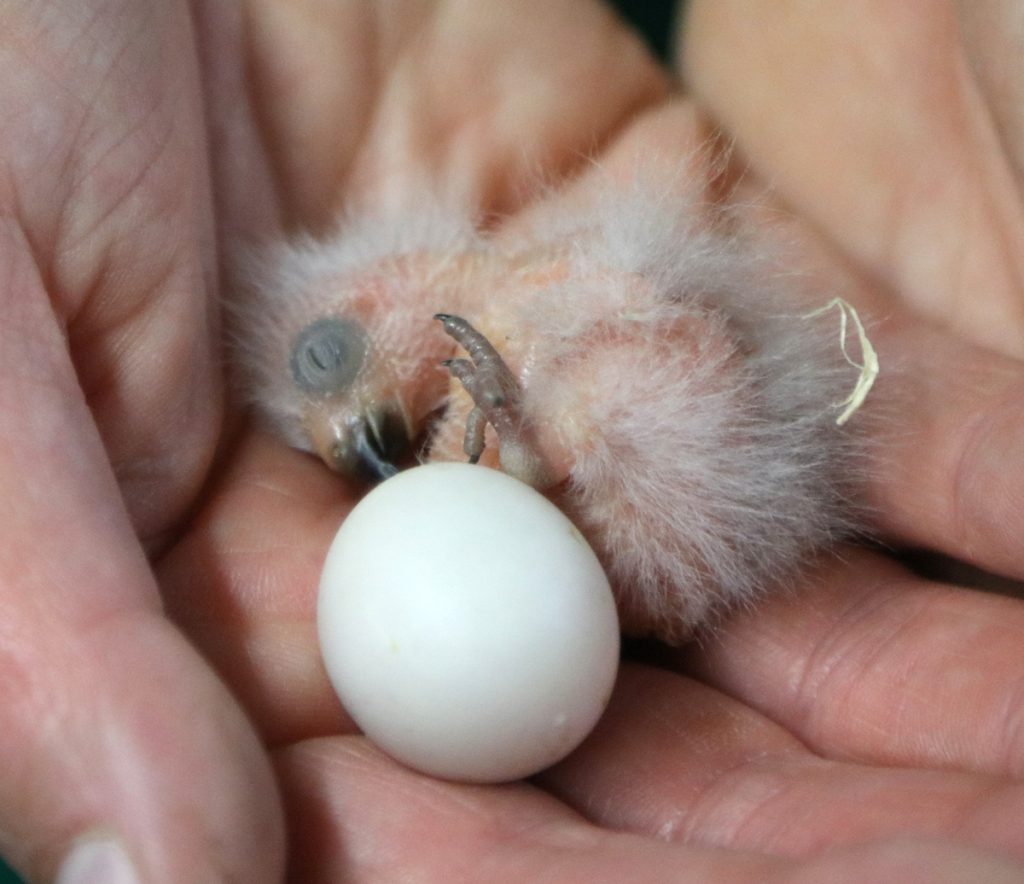
Above: An egg and recently-hatched chick, one of many Mitchell’s Lorikeets bred at Paradise Park Wildlife Sanctuary.
Below: Two young Mitchell’s Lorikeets at Paradise Park Wildlife Sanctuary
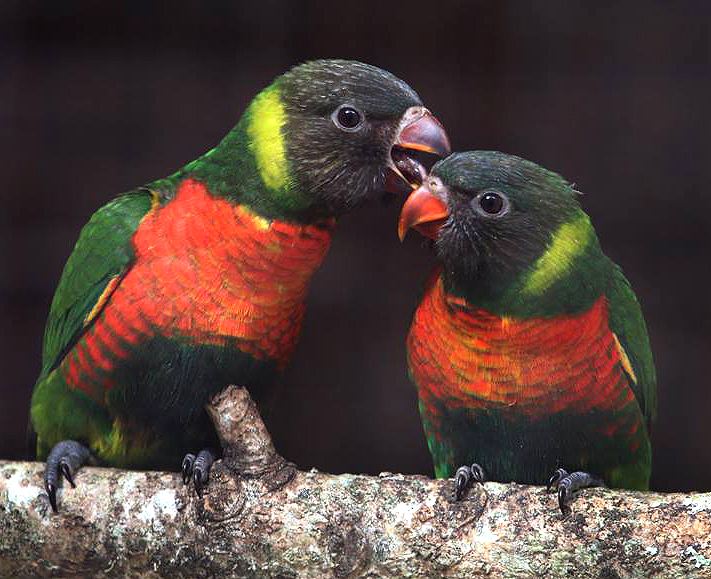
In July 2025 after many years of planning, a group of 40 Mitchell’s Lorikeets bred at Paradise Park Wildlife Sanctuary left Cornwall, arriving safely at the their new homes in Bali.
The species had suffered a steep population decline over recent decades due to capture for the wild bird trade, driving it to the brink of extinction. Paradise Park’s long-term aim to restore the species to its native Bali was underway!
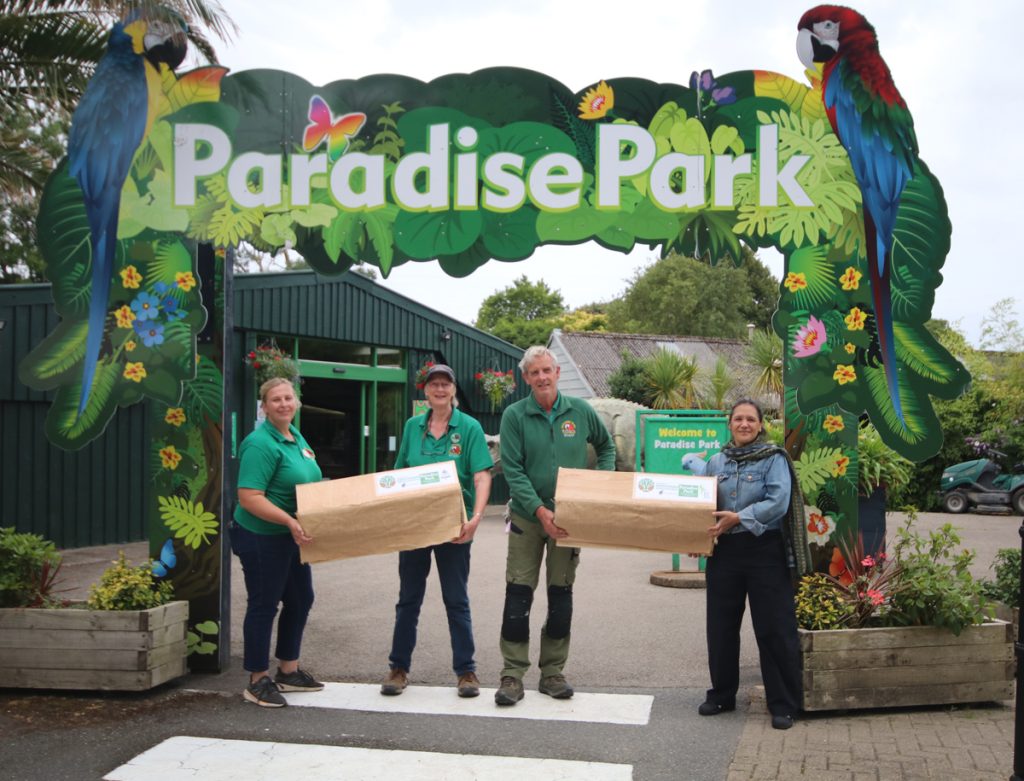
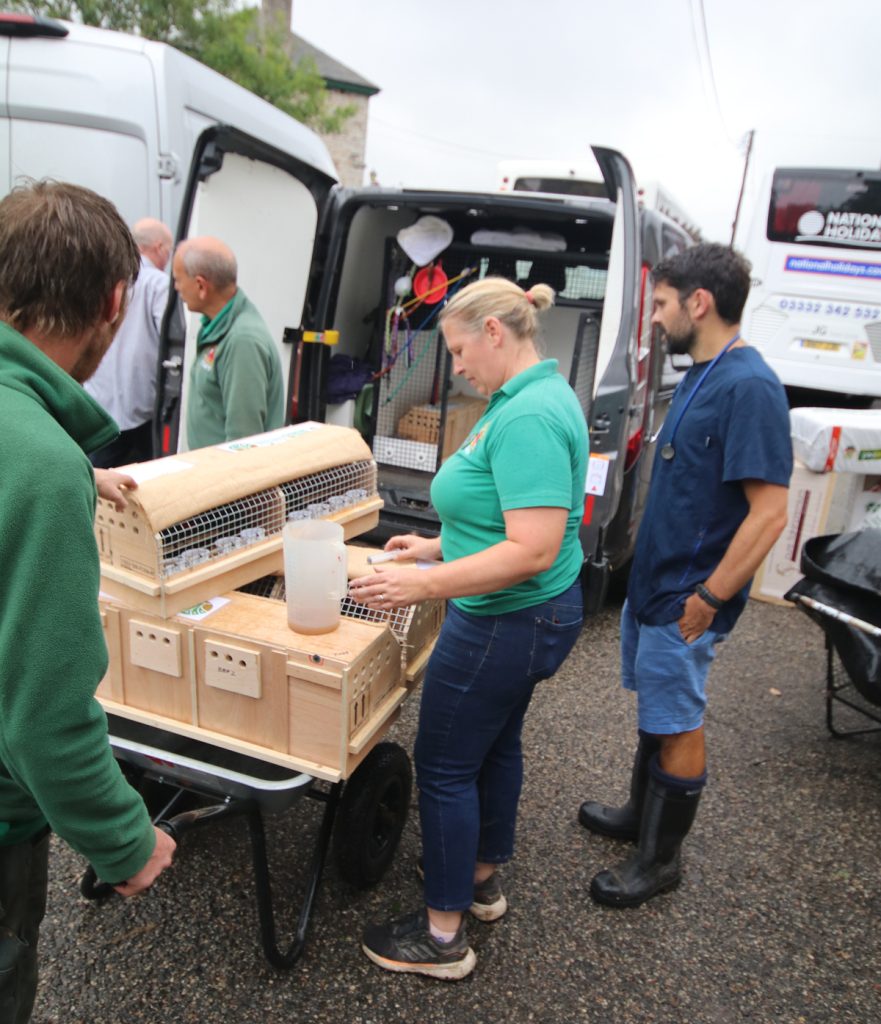
Paradise Park’s partners in this project are Bali Bird Park and Taman Safari Indonesia, the two organisations which will hold and breed the lorikeets in Bali, with the World Parrot Trust facilitating, funding and giving scientific support. Young birds will be released into suitable habitat, supported and monitored by the partners as they adapt to the wild.
Curator David Woolcock said “We are delighted to report that the birds settled in very well after their journey and at ‘Bali Bird Park’ several pairs produced eggs very quickly and nine chicks have hatched – a great sign that they are healthy and settled.
‘Taman Safari Bali’ had a ceremony to inaugurate its Lorikeet Breeding Centre hailing it as a milestone in the conservation of Indonesia’s endangered wildlife, and it also reports that eggs are being incubated by several pairs.
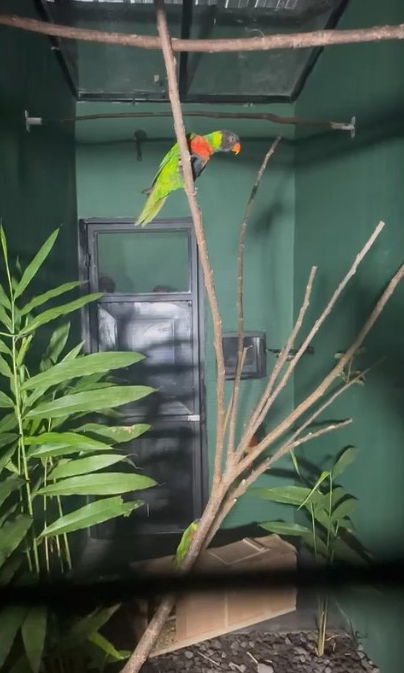
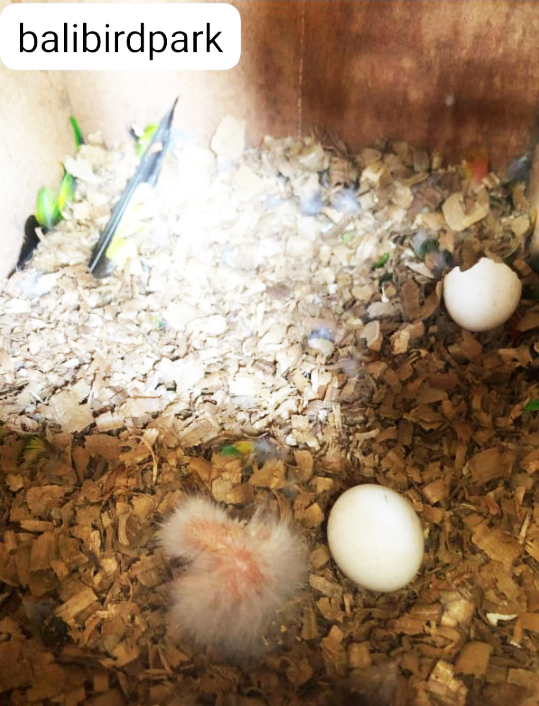
Working with our international partners we look forward to a time when the offspring of birds bred in the UK can be returned to their rightful home in the forests of Bali.
This project is a magnificent example of collaboration. Demonstrating that the hard work of dedicated teams across the globe can achieve great things to restore.”
Photograph below of two of the Bali Bird Park chicks taken by Luis Ortiz-Catedral PhD, Oceania Regional Director, World Parrot Trust.
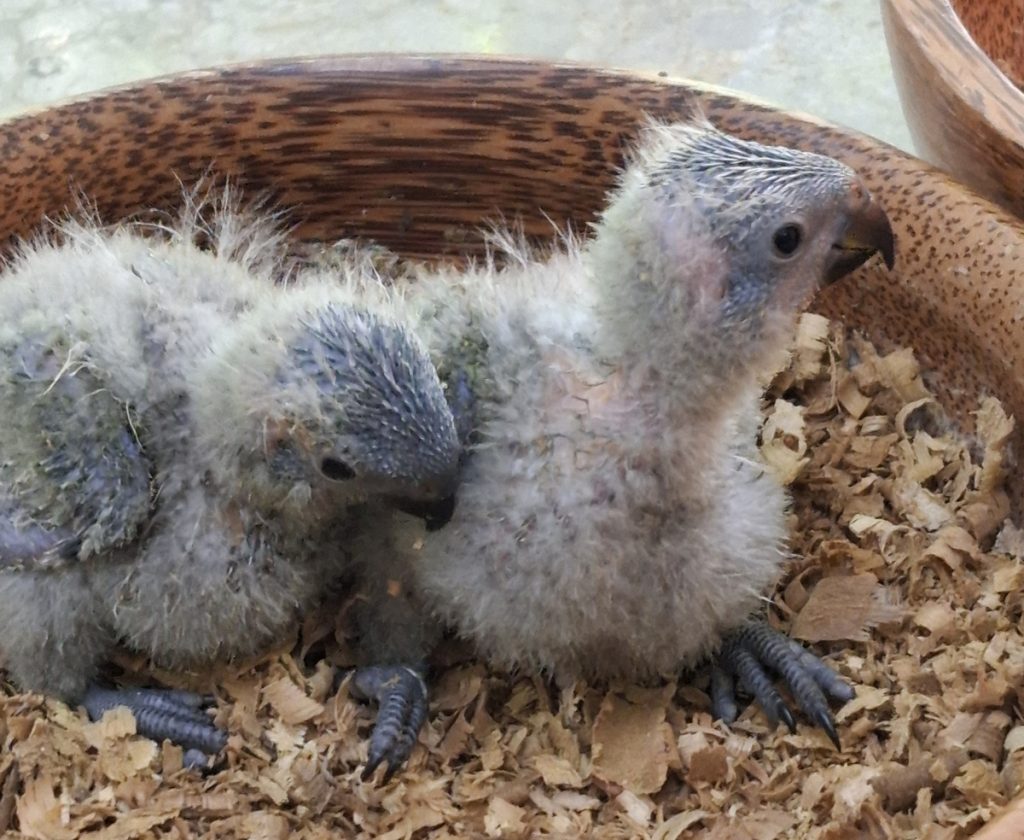
BELOW – LATEST VIDEOS October 2025 – From Bali Bird Park, who at the time of loading this video now have nine chicks.
Click on posters below for information visuals.

Mitchell’s Lorikeets (Trichoglossus forsteni mitchellii)
World Parrot Trust Mitchell’s Lorikeet – Studying Released Birds and Mitchell’s Lorikeet Recovery
Bali Bird Park Types of Lorikeets and Fight Extinction
Taman Safari Bali Inaugurates Mitchell’s Lorikeet Breeding Centre
